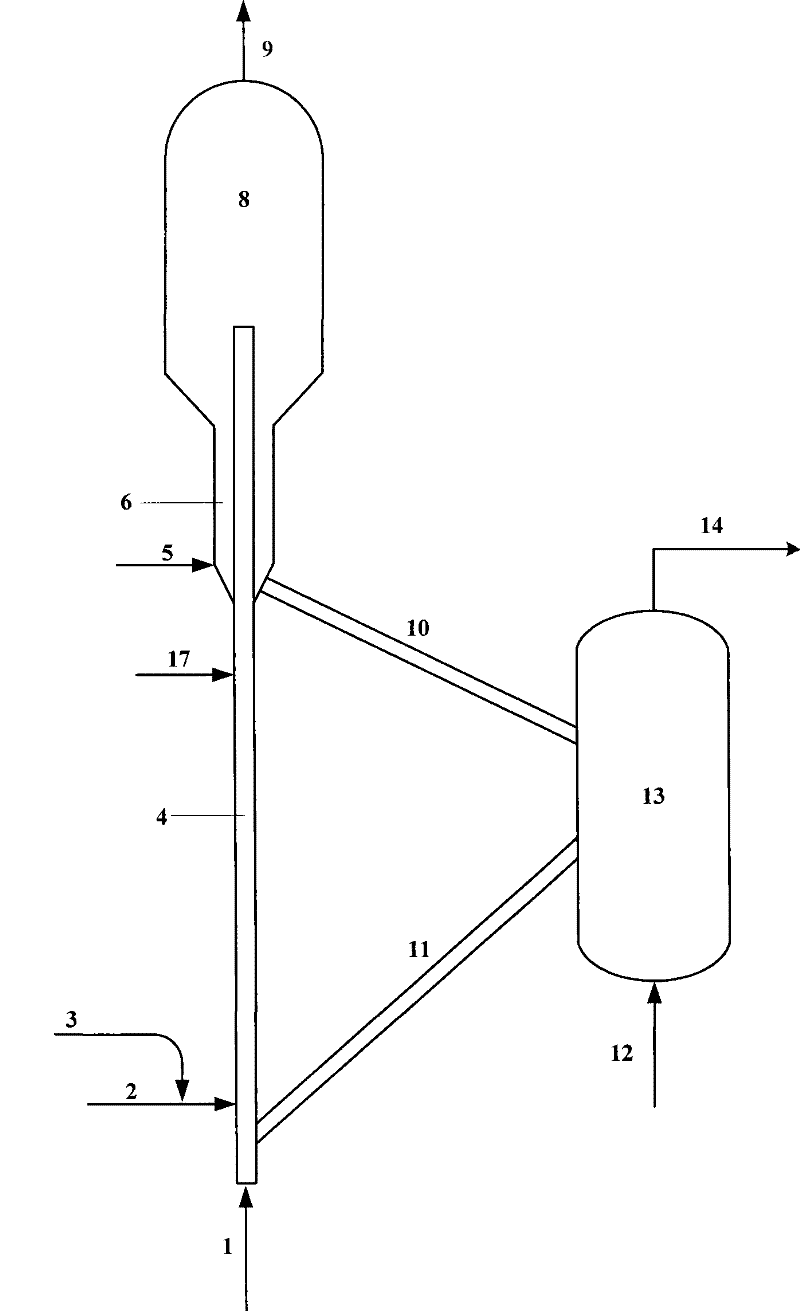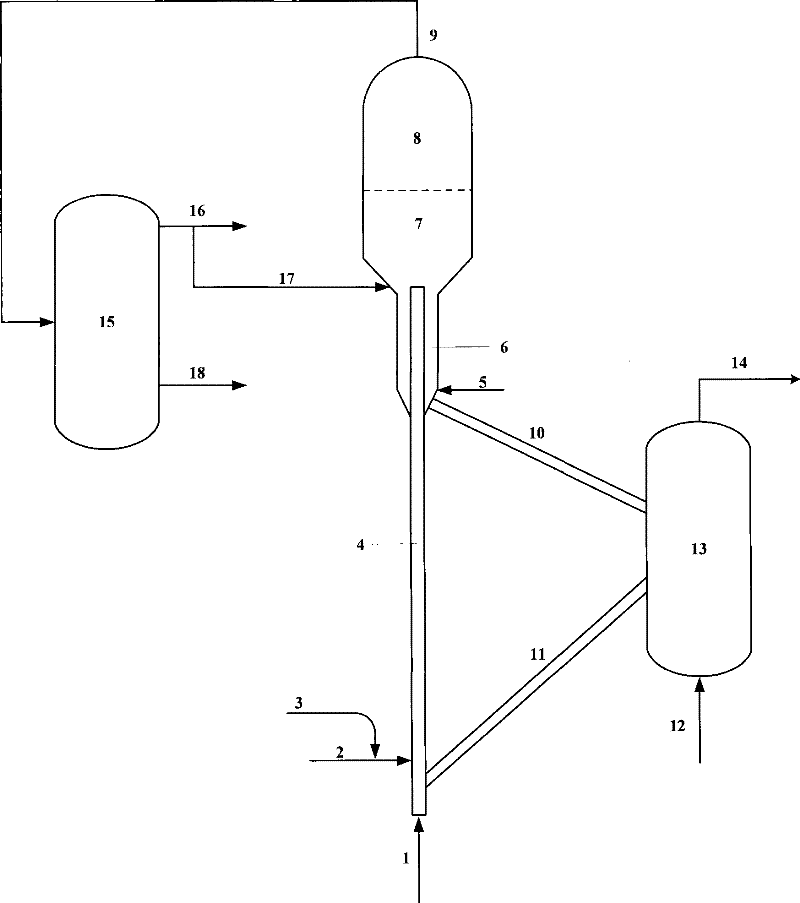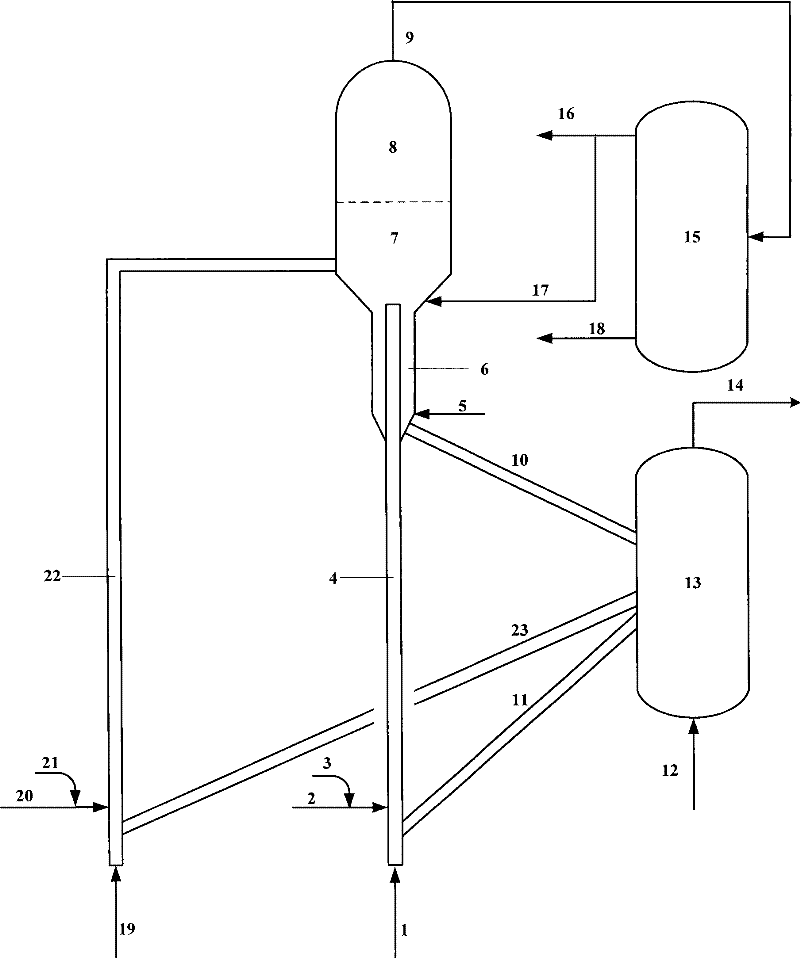Catalytic conversion method for improving productivity of low carbon olefin hydrocarbon
A catalytic conversion method and carbon olefin yield technology, which is applied in the field of low-carbon olefins, can solve problems such as the decline in propylene yield, and achieve the effects of increasing yield, wide application range, and wide source of raw materials
- Summary
- Abstract
- Description
- Claims
- Application Information
AI Technical Summary
Problems solved by technology
Method used
Image
Examples
Embodiment 1
[0038] This example illustrates: using the method provided by the invention, when hydrogen (purity: 99.99% by volume) is injected into the reactor, the catalytic reaction activity of light olefins on a small-scale fixed fluidized bed experimental device.
[0039] The experiment uses raw material A as the raw material, and adopts the intermittent operation mode. The raw material, hydrogen and atomized steam are heated to about 350°C by the preheating furnace, and then enter the bottom of the fluidized bed reactor through the feeding nozzle, and contact with the hot catalyst for catalytic conversion reaction. . After the reaction product and hydrogen are separated from the catalyst, they enter the product separation system, and the reaction product is further separated into gas products and liquid products. After the reaction is completed, it enters the stripping stage, and the hydrocarbon products adsorbed on the unborn catalyst are stripped out by water vapor. After the strip...
Embodiment 2
[0045] This example illustrates: using the method provided by the present invention, heavy hydrocarbons are catalytically converted to produce ethylene and propylene when hydrogen-rich catalytic cracking dry gas (hydrogen content is 30.58% by volume) is injected into the reactor.
[0046] In the experiment, raw material B was used as the raw material, and the catalytic conversion experiment was carried out on a medium-sized riser device with continuous reaction-regeneration operation. The riser has an inner diameter of 16 mm and a height of 6 meters. Starting from the raw material nozzle of the riser, the effective length of the riser is defined as 100% along the flow direction of the raw material, and the injection position of the hydrogen-rich gas is 40% of the riser.
[0047] The experiment adopts the operation mode of one-way pass. The regenerated catalyst with a temperature of about 700°C enters the bottom of the reaction section of the riser through the regenerated incl...
Embodiment 3
[0050] This example illustrates: using the method provided by the present invention, heavy hydrocarbons are catalytically converted to produce ethylene and propylene when hydrogen-rich catalytic cracking dry gas (hydrogen content is 30.58% by volume) is injected into the reactor.
[0051] In the experiment, raw material B was used as the raw material, and the reaction device and main experimental steps used in the experiment were the same as those in Example 2. The hydrogen-enriched gas is injected at 70% of the riser.
[0052] The main operating conditions and results of the experiments are listed in Table 3. It can be seen from Table 3 that the yields of ethylene and propylene are as high as 4.62% by weight and 18.86% by weight respectively.
PUM
| Property | Measurement | Unit |
|---|---|---|
| pore size | aaaaa | aaaaa |
Abstract
Description
Claims
Application Information
 Login to View More
Login to View More - R&D
- Intellectual Property
- Life Sciences
- Materials
- Tech Scout
- Unparalleled Data Quality
- Higher Quality Content
- 60% Fewer Hallucinations
Browse by: Latest US Patents, China's latest patents, Technical Efficacy Thesaurus, Application Domain, Technology Topic, Popular Technical Reports.
© 2025 PatSnap. All rights reserved.Legal|Privacy policy|Modern Slavery Act Transparency Statement|Sitemap|About US| Contact US: help@patsnap.com



